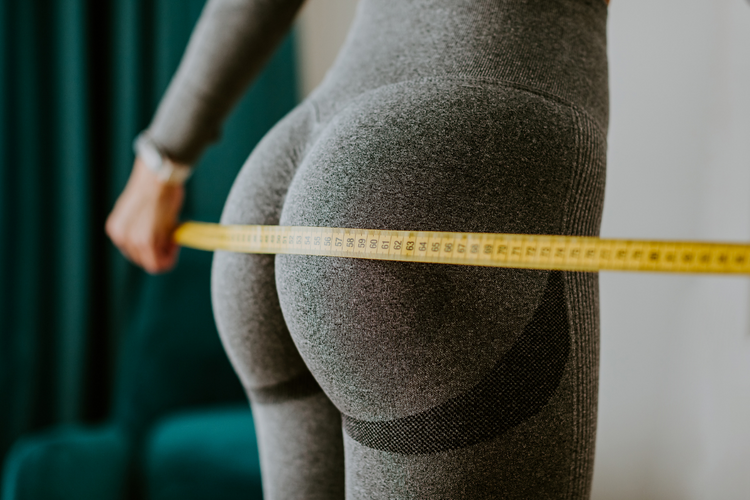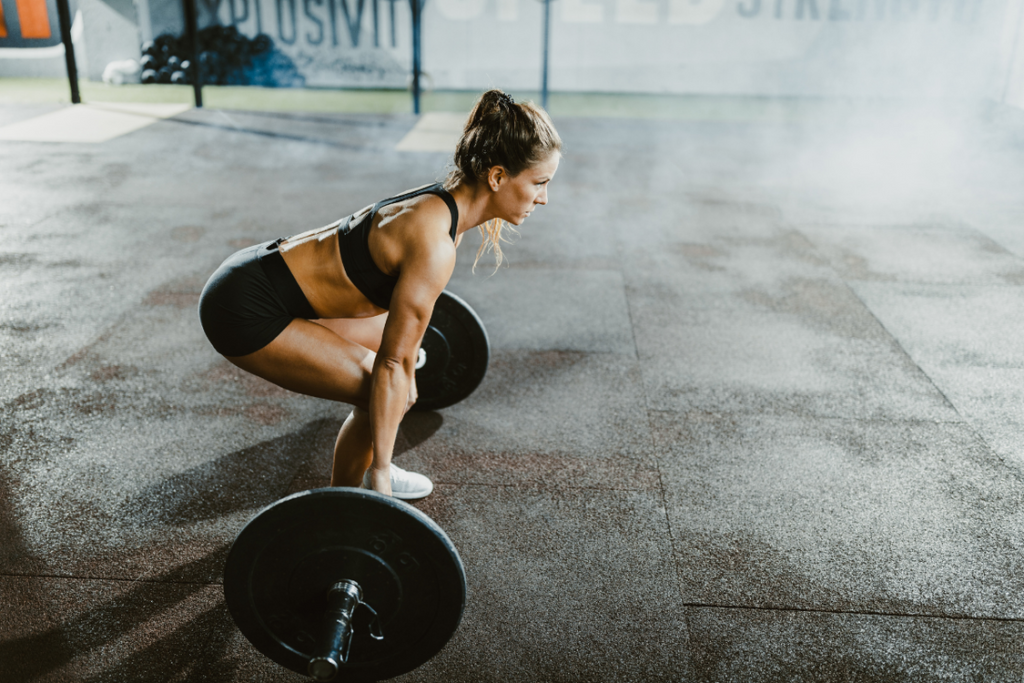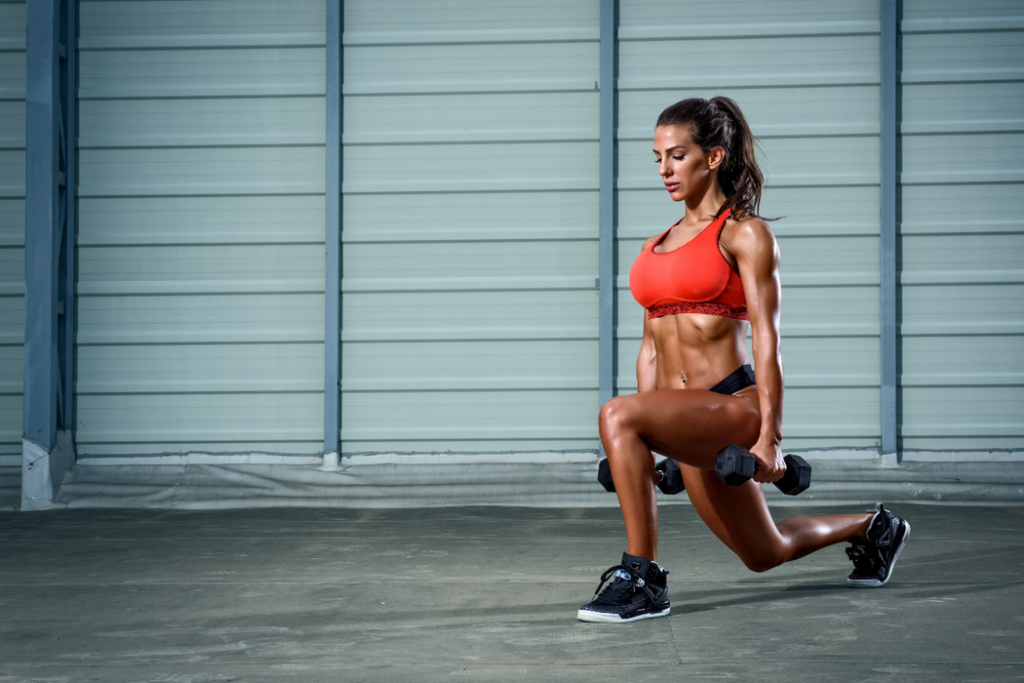Do you want to have a strong, lifted cuteness of a butt? Or maybe you’re in the ‘Back That Thing Up’ camp and you want to Bob the Builder your behind stat! Either way, you’ve come to the right place!

Working out your glutes is essential for achieving your fitness goals and building those cheeky assets of yours — and that means understanding the best glute training frequency for your individual needs.
In this blog post, we’re going to dive into the different types of exercises that you can do to work your glutes, and how often you should do them. We’ll also look at how to build a glute-focused workout plan so you can get the best results. Let’s get started!
Why Is Glute Training Important?



First, let’s talk about why it’s important to train your glutes. We all know that big booty’s are trending in 2023. Besides being trendy, your glutes are the largest muscle group in your body, and they’re responsible for a range of important functions, such as hip extension and rotation, knee flexion, and stabilizing your spine.
Having strong glutes is also important for improving your performance in a range of activities, from everyday activities like walking and running, to more strenuous activities such as weightlifting and CrossFit.
But perhaps the most important reason to train your glutes is that ‘erbody knows that a strong, lifted butt looks great! In jeans, in a bikini, as your most fun summer accessory, you name it. A good booty can give you more confidence and make you feel more sexy – at any age!
What Exercises Should You Do for Your Glutes?

When it comes to exercising your glutes, compound movements are the way to go. Compound movements involve multiple muscle groups working together, which is ideal for building strength and muscle.
The most popular glute exercises are squats and deadlifts, which target your glutes, hamstrings, and quads. Squats and deadlifts are great for building strength and power, and they also help to improve your posture.
Other effective glute exercises include hip thrusts, lunges, step-ups, and glute bridges. Hip thrusts and glute bridges are great for targeting your glutes and building muscular endurance, while lunges and step-ups are great for improving balance and coordination.
It’s important to note that some of these exercises require the use of weights or resistance bands. In reality, adding more weight and or volume of sets means more muscle and therefore, a more of a lifted appearance. If you’re a beginner, it’s best to start with bodyweight or a lighter weight for exercises and gradually increase the intensity as you get more comfortable with the movements.
Finally, make sure to warm up before you do any of these exercises. Warming up will help to prevent injury and ensure that you get the most out of your workout.
How Often Should You Train Your Glutes?
Now that you know what exercises to do, let’s talk about how often you should do them.
When it comes to glute training frequency, there’s no single answer that’s right for everyone. Studies have shown that training your glutes 2-3 times per week is the most effective for muscle growth and strength gains.
However, if you’re looking to dial up the potential growth, you may want to increase your training frequency to 3-4 times per week. Your glutes can handle it! This will allow you to work on your muscular endurance (aka volume) and power, as well as your strength. Remember, more muscle means more lift, more tone and just more booty in general.
It’s also important to note that if you’re a beginner, you may want to start with a lower frequency of 1-2 times per week to avoid injury.
How to Build an Effective Glute Training Program
Now that you know how often to train your glutes, let’s look at how to build an effective glute training program. The first step is to choose the exercises you’ll do.
As we discussed earlier, squats, deadlifts, hip thrusts, lunges, step-ups, and glute bridges are all great options. Next, decide how often you’ll do each exercise. For example, you could do squats and deadlifts 2-3 times per week, and hip thrusts and glute bridges 1-2 times per week.
Finally, you need to decide how many sets and reps you’ll do for each exercise. This will depend on your goals, but a good starting point is 3-4 sets of 8-12 reps.
Real-Life Example of a Glute Workout Schedule
Now that you know the basics of building a glute-focused workout program, let’s look at a real-life example.
Day 1: Heavy Lifting
- Barbell Hip Thrusts: 4 sets x 6-10 reps
- Barbell Squats: 4 sets x 6-10 reps
- Romanian Deadlifts: 4 sets x 8 reps
- Glute Bridges with Bands: 4 sets x 12 reps
- Cable Pull-Throughs: 4 sets x 15 reps
(Rest day or Upper Body Work between day 1 & 2 to allow your muscles time to recover and grow)
Day 2: High Reps
- Barbell Hip Thrusts: 4 sets x 12 reps
- Elevated Bulgarian Split Squats: 4 sets x 15 reps (each leg)
- Glute Ham Raise: 4 sets x 20 reps
- Cable Kickbacks: 4 sets x 25 reps (each leg)
- Banded Clamshells: 4 sets x 30 reps (each leg)
(Rest day or Upper Body Work between day 3 & 4 to allow your muscles time to recover and grow)
Day 3: Accessory Work
- Banded Lateral Walks: 3 sets x 20 steps (each direction)
- Single-Leg Deadlifts with Dumbbells: 3 sets x 12 reps (each leg)
- Cable Pull-Throughs: 3 sets x 15 reps
- Donkey Kicks with Ankle Weights: 3 sets x 20 reps (each leg)
- Frog Pumps: 3 sets x 30 reps
Day 4: Plyometrics
- Box Jumps: 3 sets x 10 reps
- Split Squat Jumps: 3 sets x 15 reps (each leg)
- Skater Jumps: 3 sets x 20 reps
- Broad Jumps: 3 sets x 5 reps
- Jumping Lunges: 3 sets x 10 reps (each leg)
Note: It’s important to warm up properly before each workout and as I mentioned earlier, to use appropriate weights for your fitness level.

So there you have it — the steps you need to take to build an effective glute training program. While it may seem daunting at first, it’s actually quite straightforward once you get the hang of it. Good luck!
1. Contreras, B. (2019). Your Optimal Training Frequency for the Glutes – Part I: Exercise Type. Retrieved from https://bretcontreras.com/your-optimal-training-frequency-for-the-glutes-part-i-exercise-type/
2. Schoenfeld, B. J., Ogborn, D., & Krieger, J. W. (2017). Dose-response relationship between weekly resistance training volume and increases in muscle mass: A systematic review and meta-analysis. Journal of Sports Sciences, 35(11), 1073-1082.
3. Helms, E. R., Aragon, A. A., & Fitschen, P. J. (2014). Evidence-based recommendations for natural bodybuilding contest preparation: nutrition and supplementation. Journal of the International Society of Sports Nutrition, 11(1), 20.
4. Rønnestad, B. R., Nygaard, H., & Raastad, T. (2013). Strength and power predictors of performance in elite youth soccer players. The Journal of Strength & Conditioning Research, 27(7), 1789-1797.
5. Schoenfeld, B. J. (2010). The mechanisms of muscle hypertrophy and their application to resistance training. The Journal of Strength & Conditioning Research, 24(10), 2857-2872.